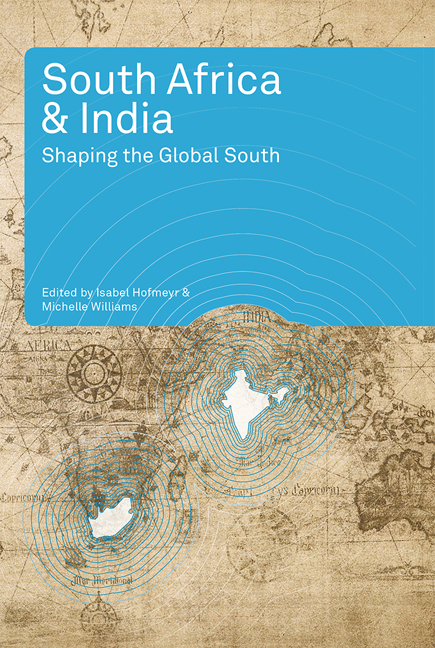Book contents
- Frontmatter
- Contents
- Acknowledgements
- Abbreviations and Acronyms
- Introduction
- Historical Connections
- Chapter 1 Gandhi's Printing Press: Indian Ocean Print Cultures and Cosmopolitanisms
- Chapter 2 Steamship Empire: Asian, African and British Sailors in the Merchant Marine c. 1880–1945
- Chapter 3 The Interlocking Worlds of the Anglo-Boer War in South Africa and India
- Chapter 4 The Disquieting of History: Portuguese (De)Colonisation and Goan Migration in the Indian Ocean
- Chapter 5 Monty … Meets Gandhi … Meets Mandela: The Dilemma of Non-violent Resisters in South Africa, 1940–60
- Socio-political Comparisons
- Conclusion
- Notes and References
- About the Authors
- Index
Chapter 1 - Gandhi's Printing Press: Indian Ocean Print Cultures and Cosmopolitanisms
from Historical Connections
Published online by Cambridge University Press: 21 April 2018
- Frontmatter
- Contents
- Acknowledgements
- Abbreviations and Acronyms
- Introduction
- Historical Connections
- Chapter 1 Gandhi's Printing Press: Indian Ocean Print Cultures and Cosmopolitanisms
- Chapter 2 Steamship Empire: Asian, African and British Sailors in the Merchant Marine c. 1880–1945
- Chapter 3 The Interlocking Worlds of the Anglo-Boer War in South Africa and India
- Chapter 4 The Disquieting of History: Portuguese (De)Colonisation and Goan Migration in the Indian Ocean
- Chapter 5 Monty … Meets Gandhi … Meets Mandela: The Dilemma of Non-violent Resisters in South Africa, 1940–60
- Socio-political Comparisons
- Conclusion
- Notes and References
- About the Authors
- Index
Summary
Introduction
At low tide from the beach at Porbandar in Gujarat, one can just glimpse the tip of a shipwreck. Originally the SS Khedive, this vessel is the subject of a double legend. The first is that it carried Mohandas Gandhi on one of his voyages between Bombay and Durban; the second is that the ship sank with Gandhi's printing press on board.
This is not the only report of a phantom printing press associated with Gandhi. More than a century earlier another account had emerged, this time on the other side of the Indian Ocean, in Durban. Towards the end of 1896 Gandhi was headed for this port on his way back from Bombay. Angry white mobs awaited his arrival, claiming he was organising an ‘Asiatic Invasion’. Rumours circulated that Gandhi had a printing press and 30 compositors on board. According to the Natal media, the lynch mob intended first to attack Gandhi and then the printing press (Natal Witness, 11 January 1897).
In part, this phenomenon of the phantom printing press can be easily explained. In the Durban case, it had been well known for some years that Gandhi wished to acquire such a press in order to start a newspaper that could speak for the interests of Indian merchants in Natal (Pyarelal, 1986:63–65). The alarm that much of white Natal society felt at this idea expressed itself in the rumour of the imaginary press. White artisans were equally perturbed at the prospect of cheap compositors coming to undercut the market.
A few years later, in 1898, Gandhi did indeed play a part in purchasing a press that was to print his newspaper, Indian Opinion, which became pivotal in his satyagraha campaigns. When Gandhi returned to India in 1914, newspapers continued to be a key component of his non-cooperation movements. Gandhi, the newspaper and the printing press were closely associated, and hence the memory of his printing press persisting in legend is understandable. Indeed, Gandhi's press has become something of a minor icon in his life story. A chapter of his autobiography discusses his printing press in South Africa (Gandhi, M., 1957:302–4), while the presses he used feature in exhibitions and museums (Satyagraha, n.d.).
- Type
- Chapter
- Information
- South Africa and IndiaShaping the Global South, pp. 22 - 37Publisher: Wits University PressPrint publication year: 2011

